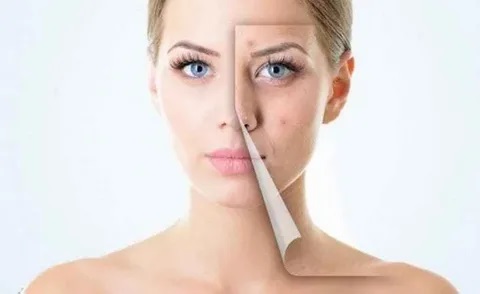
Undergoing a chemical peel in Dubai (التقشير الكيميائي في دبي) can be a game-changer for your skin—diminishing fine lines, improving texture, and restoring a radiant glow. But in Dubai’s scorching sun, low humidity, and occasional sandstorms, your post-peel skincare regimen plays a critical role in preserving those hard-won results. Follow these expert strategies to extend the benefits of your peel and keep your complexion healthy, hydrated, and protected all year round.
1. Embrace Rigorous Sun Protection
Broad-Spectrum Physical Sunscreens
-
Why It Matters: Post-peel skin is exceptionally photosensitive. In Dubai, where the UV index often soars above 10, even brief sun exposure can trigger hyperpigmentation or undo your peel’s brightening effects.
-
Your Action Plan: Apply a mineral sunscreen (zinc oxide or titanium dioxide) with SPF 50+ every morning. These physical filters sit on top of the skin and immediately block UVA and UVB rays—essential when your barrier is still recovering.
Reapplication Routine
-
Every Two Hours: Especially if you’re outdoors, reapply liberally.
-
After Sweating or Swimming: Sweat and water can break down traditional sunscreens. Keep a travel-size mineral sunscreen on hand.
Protective Clothing & Shade
-
Wide-Brimmed Hats & Sunglasses: Shield your face and delicate eye area.
-
UPF Clothing: Lightweight, UV-rated fabrics provide an extra layer of defense.
-
Seek Shade: Between 11 AM and 4 PM, plan indoor activities or stroll in shaded walkways to minimize direct sunlight.
2. Commit to a Hydration-First Skincare Routine
Layered Moisturization
-
Hyaluronic Acid Serum: On damp skin, apply a light hyaluronic acid serum to draw moisture into deeper layers.
-
Ceramide-Rich Cream: Follow with a moisturizer containing ceramides and essential fatty acids to rebuild the lipid barrier.
-
Occlusive Balm at Night: Seal in hydration with a thin layer of petrolatum or a silicone-based balm before bed to reduce transepidermal water loss.
Indoor Humidity Control
-
Humidifiers: Dry, air-conditioned environments can sap moisture from your skin. Running a humidifier helps maintain ambient humidity around 40–60%—ideal for barrier repair.
-
Hydrating Face Mists: Throughout the day, mist with a soothing, alcohol-free hydrating spray (look for ingredients like glycerin or rose water).
3. Avoid Irritants and Barrier-Stripping Ingredients
Skip Strong Actives Temporarily
-
Retinoids and Exfoliants: AHAs, BHAs, and retinol boost turnover but can over-sensitize post-peel skin. Avoid until peeling fully subsides (usually 7–14 days, depending on peel depth).
-
Alcohol-Based Toners & Fragrances: These can dry and inflame. Opt for gentle, fragrance-free formulas.
Gentle Cleansing
-
pH-Balanced, Non-Foaming Cleansers: Choose creamy or gel cleansers without sulfates. They remove debris without stripping essential oils.
-
Lukewarm Water Only: Hot water can exacerbate redness and dryness.
4. Shield Against Sand, Dust, and Pollution
Wind and Sandstorms
-
Protective Masks or Scarves: In the event of a sandstorm, cover your face with a clean, breathable scarf to minimize particulate contact with sensitive skin.
-
Prompt Cleansing: After outdoor exposure, gently cleanse your skin to remove dust—but avoid vigorous scrubbing.
Pollution Defense
-
Antioxidant Serums: Incorporate a vitamin C or niacinamide serum once your peel has healed. These antioxidants neutralize free radicals generated by environmental pollutants.
-
Barrier-Strengthening Lipids: Topicals containing cholesterol and fatty acids can block pollutant penetration and reinforce your skin’s natural defenses.
5. Incorporate Soothing and Repair-Boosting Treatments
LED Light Therapy
-
Why It Helps: Red and near-infrared LED wavelengths calm inflammation and accelerate collagen synthesis—perfect for enhancing post-peel recovery.
-
How Often: Short, 10- to 15-minute sessions 2–3 times a week (ideally at home devices or at your clinic) can prolong your peel’s benefits.
Gentle Face Masks
-
Hydrogel or Alginate Masks: Use 1–2 times a week to deliver a concentrated dose of hydration and calming actives (aloe vera, panthenol).
-
Cooling Compresses: A chilled, damp cloth applied for 5–10 minutes can instantly soothe any residual warmth or tingling.
6. Plan Your Activities Around Healing Phases
Downtime Days
-
Superficial Peels: Expect light flaking for 1–3 days. Continue your routine but avoid heavy makeup.
-
Medium Peels: Schedule a 5–7-day window away from outdoor events to manage peeling and sensitivity.
-
Deep Peels: Plan for at least 10–14 days of recovery in a controlled, low-sun environment.
Lifestyle Adjustments
-
Avoid Intense Workouts: Heavy sweating can irritate regenerating skin—opt for gentle yoga or indoor stretching until your barrier is fully restored.
-
Skip Chlorinated Pools & Saunas: Harsh chemicals and high heat disrupt the healing process.
7. Adopt a Long-Term Maintenance Strategy
Regular Superficial Peels
-
Frequency: Every 4–6 weeks, schedule a light peel to sustain radiance and manage minor texture concerns.
-
Benefits: These quick treatments help slough off dead cells before they accumulate, preserving your results.
Complementary Therapies
-
Microneedling or RF Microneedling: Every 3–4 months, these treatments can boost collagen and address deeper lines or acne scars without excessive downtime.
-
Seasonal Laser Toning: Consider non-ablative lasers (e.g., Nd:YAG) in cooler months to target pigmentation without peeling.
Homecare Essentials
-
Daily Antioxidants: Continue vitamin C, E, or ferulic acid serums to protect against new environmental damage.
-
Nightly Retinoids: Once fully healed, reintroduce retinoids gradually to maintain cell turnover and collagen health—always paired with excellent sun protection.
8. Monitor Your Skin and Seek Professional Guidance
Listen to Your Skin
-
Persistent Redness or Irritation: Could signal barrier compromise—scale back actives and boost hydration.
-
Unexpected Breakouts or Pigmentation: Book a follow-up with your dermatologist to adjust your maintenance plan.
Annual Check-Ins
-
Dermatology Visits: Even when you’re not actively peeling, schedule a yearly skin assessment to tweak your regimen, update your sunscreen, and ensure optimal health as seasons and environmental factors evolve.
Conclusion
Maintaining the glow from your chemical peel in Dubai requires a proactive, climate-smart approach. By prioritizing robust sun protection, layering hydration, avoiding irritants, and incorporating complementary treatments, you’ll reinforce your skin’s barrier and extend your peel’s results. Factor in environmental challenges—sandstorms, low humidity, and high UV—and tailor your routine accordingly. With consistent care and expert guidance, you can enjoy a smooth, luminous complexion that withstands the rigors of Dubai’s unique environment.









